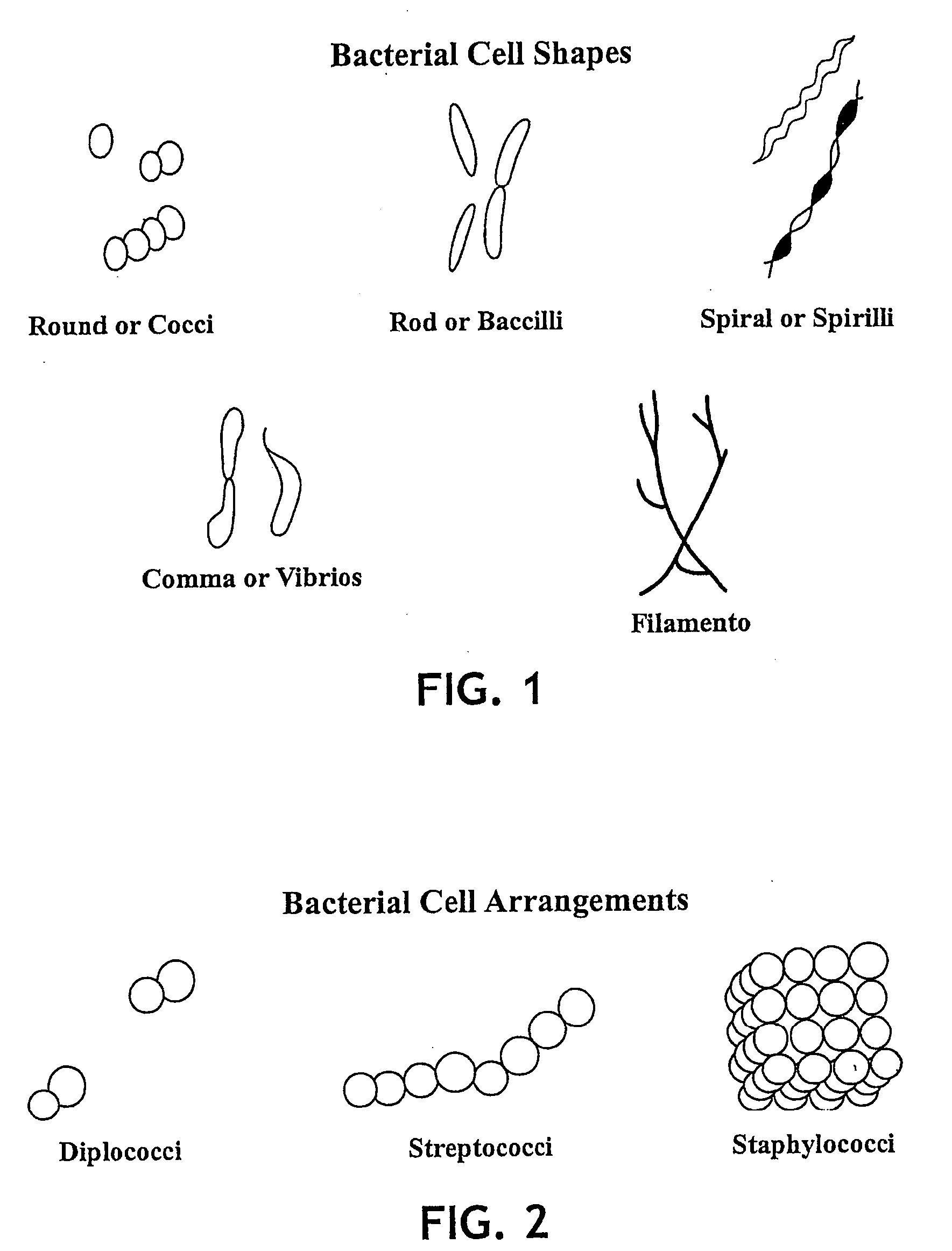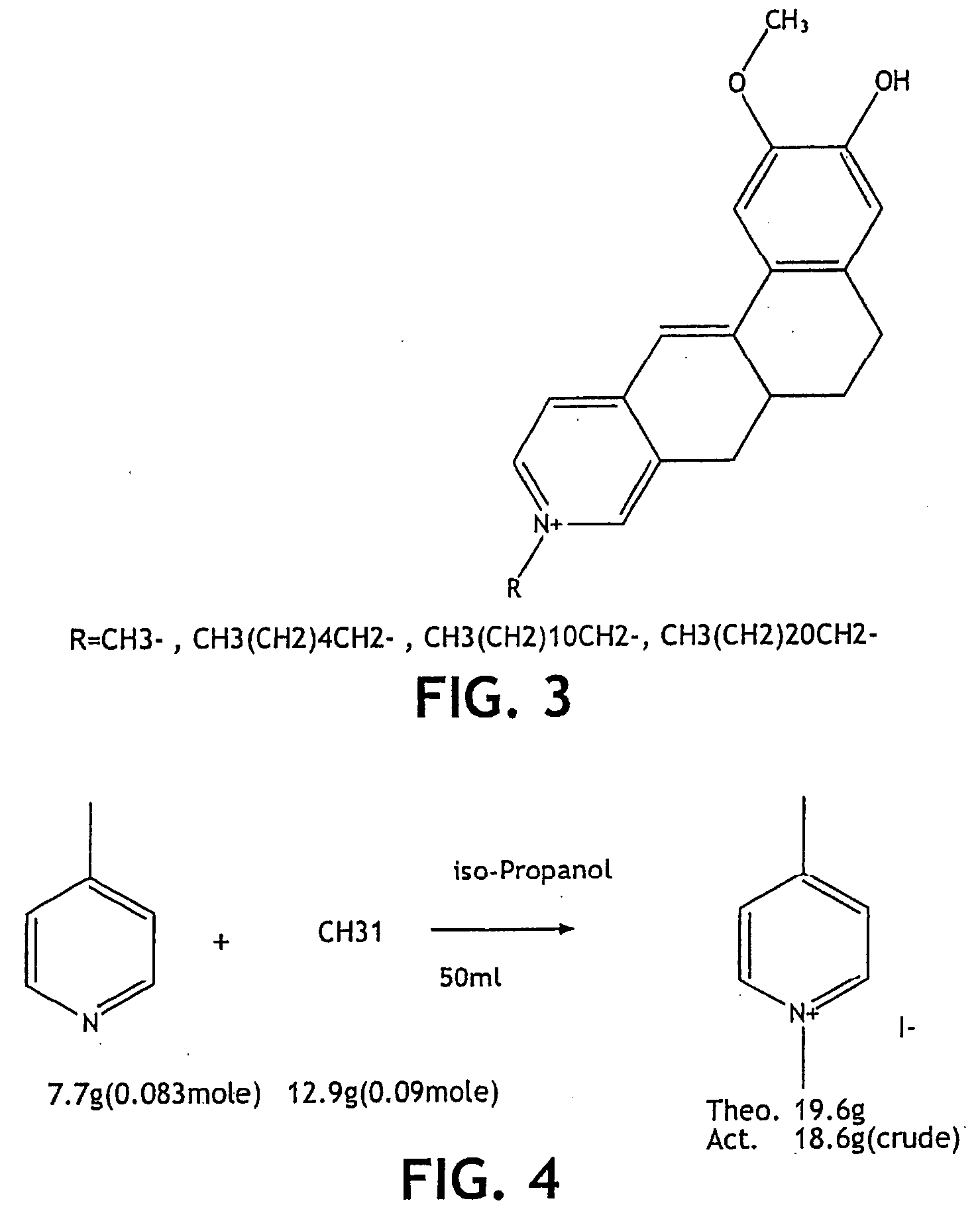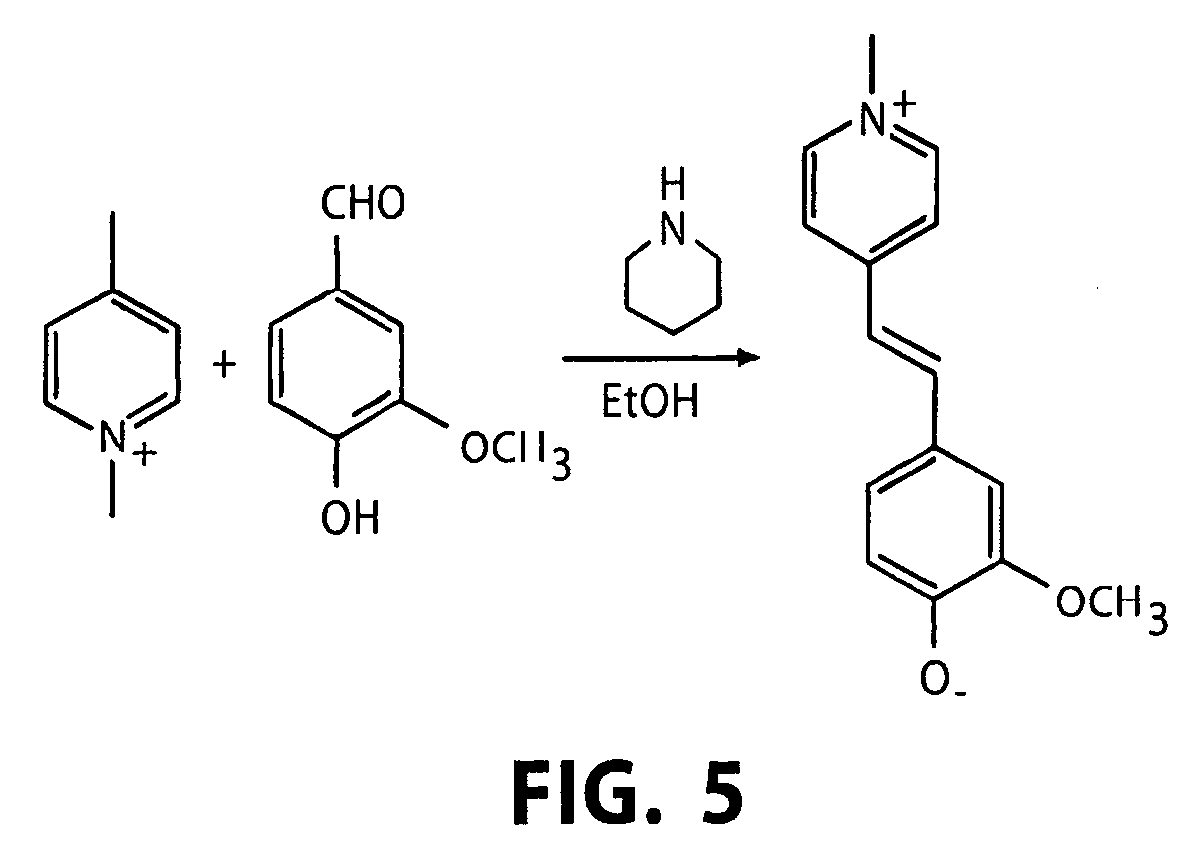Microbial detection and quantification
a technology for microorganisms and detection products, applied in the field of microorganism detection and quantification, can solve the problems of microbial contamination of food, death of children and seniors, sickening others, etc., and achieve the effects of enhancing the brightness of colorants, preventing false positive readings, and improving the color of dyes
- Summary
- Abstract
- Description
- Claims
- Application Information
AI Technical Summary
Benefits of technology
Problems solved by technology
Method used
Image
Examples
example 1
Reichardt's Dye in Acetonitrile Solvent Applied to a Previously Contaminated Surface
[0150] In order to investigate the use of these dyes as a spray, a solution of Reichardt's dye (160 mg in 10 mL of acetonitrile) was made. A spray bottle with an aerosol propellant was utilized to create a spray mechanism.
[0151] A raw chicken leg was aged at room temperature for several days to ensure high bacterial levels. As shown in FIG. 6, the chicken leg was placed on the surface of a ceramic plate for several seconds (6A), then removed, after which the surface was blotted to remove any trace of chicken juice (6B). Next, the Reichardt's dye solution was sprayed onto the surface using the spray bottle (6C). The test was repeated with an additional piece of chicken to ensure repeatability and gave a similar result.
[0152] After spraying the indicator dye solution onto the surface, the entire area that had contacted the chicken was decolorized (that is, the indicator spray color changed from blue...
example 2
Reichardt's Dye in Isopropanol Applied to a Contaminated Surface
[0153] Isopropanol was investigated as a carrier which could have additional benefits due to its disinfection capability. Reichardt's dye was dissolved in isopropanol (160 mg dye into 10 mL of isopropanol). Plastic doorknobs were utilized as a “real world” surface on which to test bacterial contamination. Juice from aged chicken was used to mark the surface of one of the knobs. The other door knob was left uncontaminated as a control. Both knobs were wiped. The isopropanol solution of the dye was sprayed on both surfaces. The contaminated area of the doorknob was easily observed by its de-colorization of the Reichardt's dye from blue to colorless.
example 3
Reichardt's Dye in isopropanol Indicator Spray Testing for False Positives on Contaminated Surfaces
[0154] The Reichardt's dye indicator has been shown to have high sensitivity to microbes from chicken. In order to test the indicator for false positives, other components of chicken fluid, such as lipids and proteins, were used. Chicken broth was utilized for its non-bacterial nature and high probability of containing potential interferences.
[0155] Swanson® Chicken Broth (Campbell Soup Co., NJ, commercially available from retail grocery stores) from a freshly opened can was pipetted onto a ceramic surface and wiped dry with a SCOTT® paper towel. Juice from aged chicken was also pipette onto the ceramic surface at a different location and wiped dry as a known positive control. The Reichardt's dye indicator (160 mg in 10 ml of isopropanol) was sprayed over the ceramic surface and it was clear that only the side containing the aged chicken juice (and thus bacteria) was de-colorized. Fr...
PUM
| Property | Measurement | Unit |
|---|---|---|
| wavelength | aaaaa | aaaaa |
| weight percent | aaaaa | aaaaa |
| weight percent | aaaaa | aaaaa |
Abstract
Description
Claims
Application Information
 Login to View More
Login to View More - R&D
- Intellectual Property
- Life Sciences
- Materials
- Tech Scout
- Unparalleled Data Quality
- Higher Quality Content
- 60% Fewer Hallucinations
Browse by: Latest US Patents, China's latest patents, Technical Efficacy Thesaurus, Application Domain, Technology Topic, Popular Technical Reports.
© 2025 PatSnap. All rights reserved.Legal|Privacy policy|Modern Slavery Act Transparency Statement|Sitemap|About US| Contact US: help@patsnap.com



